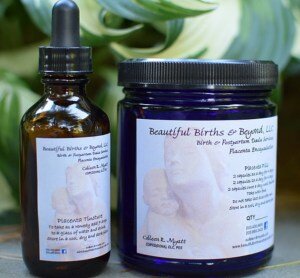Your Afterbirth and You
There are a lot of decisions to be made leading up to the actual act of giving birth. Do you want a midwife or a doctor? Do you want a home birth or a hospital birth? Do you want to use pain management or give birth naturally?
Perhaps one of the questions that gets overlooked or unexplored most often is “what would you like to do with the afterbirth?”
There are multiple things you can do with the afterbirth to benefit your post-partum, as well as benefit others. Let’s take a look at the superpowers of the afterbirth together:
Donating Cord Blood
umbilical cord blood contains cells that are called “hematopoietic stem cells” and can be used for transplants after your baby is born. These stem cells can turn into any kind of blood cell, so they can benefit any blood type, and can help cure rare diseases such as blood disorders, immune deficiencies, and metabolic disorders. Cord blood donations have also helped to defeat some forms of cancer. There is constant research going on with cord blood, and so even if your cord blood is not used in a transplant, it could be used for research. If you are interested in donating cord blood, talk to your pregnancy professional (doctor, doula, midwife, etc.) for local banks and procedures to donate.
Keep the Cord Attached
“Lotus Births” are quickly becoming one of the popular things to do with your placenta. This is when the placenta remains attached to your baby until it naturally falls off, instead of cutting the cord at the time of birth. The placenta will naturally separate anywhere from three to ten days after birth if left attached to your baby. The believed benefits of this practice include a gentler transition from womb to world for your baby, as well as ensuring your baby gets all of the nutrients from the placenta on their own time. Some believe cutting the cord at birth robs the baby of the benefits of the placenta before they’re really ready to “cut ties” with it. If this interests you, talk with your pregnancy professionals and see if this is an option for you.
Make a Work of Art
there are a number of ways you can preserve your afterbirth in an artistic way to admire for years to come. Placenta prints may be one of the most well-known methods. Vegetable dyes can be used as a natural paint to cover the placenta before it is pressed gently onto a canvas, leaving an imprint behind. This same practice can be used with only the blood that is left on the placenta after delivery. There are also umbilical cord preservations, placenta and cord jewelry, or you can use the placenta to fertilize a tree as it grows with your baby!
Placenta Encapsulation
(or placentophagy) is a practice that dates back thousands of years in Traditional Chinese medicine, and has been used across the globe many different ways by many different cultures. The placenta is steamed, dehydrated, ground to a powder, and put into capsules for the birthing parent to ingest. There are many benefits to placenta encapsulation, including post-partum mood stabilization and increased lactation. The placenta can also be made into a tincture for those who have a hard time swallowing capsules
If you are interested in any of the above options for your afterbirth, make sure you speak with your pregnancy professionals leading up to your birth. At Beautiful Births and Beyond, we offer these services as part of our work, and can help navigate and advocate for other desired afterbirth plans as well. Your pregnancy, birth, and afterbirth should be within your control as much as possible - let us help you!




